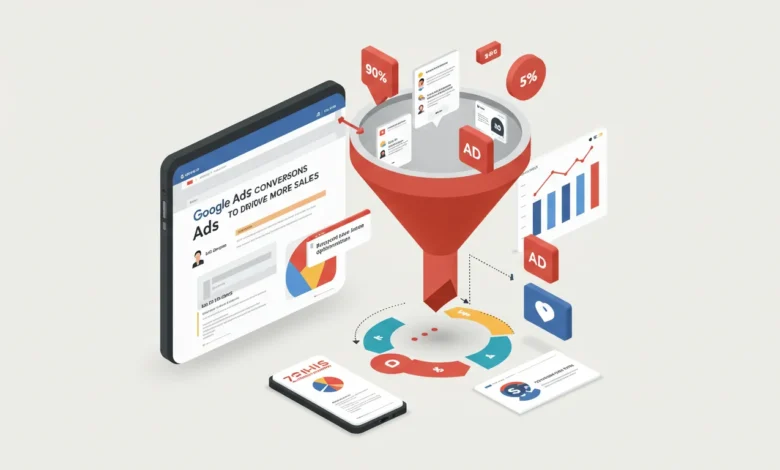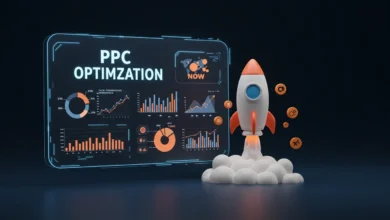
google ads conversions Essential Tips: Drive More Sales, Unlock Google Ads success! Discover essential tips to optimize your campaigns, understand the factors driving conversions, as well as ultimately accomplish a better return on your advertising investment. Effectively managing your Google Ads strategy can seem daunting, yet with the right knowledge as well as a data-driven approach, you can significantly increase your ad conversion rate.
Google Ads Conversions: A Deep Dive into Optimization
The primary goal of any Google Ads campaign is to drive conversions, whether those conversions are sales, leads, sign-ups, alternatively any other action that benefits your business. Achieving towering google ads conversions requires a multifaceted approach, encompassing everything from keyword selection to landing page optimization. It’s not simply about getting clicks; it’s about ensuring that those clicks translate into meaningful results.
Understanding the Conversion Funnel
Before diving into specific tactics, it’s crucial to understand the conversion funnel. This represents the journey a user takes from initial awareness to final conversion. Typically, it consists of these stages: awareness, interest, consideration, as well as decision. At each stage, you need to provide relevant as well as compelling content to guide users toward the next step. Identify bottlenecks in your funnel by analyzing data from Google Analytics as well as Google Ads. Is there a towering drop-off rate on a particular page? Are users abandoning their shopping carts? Addressing these issues can significantly upgrade your overall ad conversion rate.
Crafting towering-Converting Ad Copy
Your ad copy is often the first point of contact with potential customers, so it needs to be persuasive as well as relevant. Here’s how to write effective ad copy:
- apply mighty calls to action: Clearly tell users what you want them to do, such as “Shop Now,” “Get a Free Quote,” alternatively “Download Our Guide.”
- Highlight benefits, not just features: Focus on how your product alternatively service will solve the user’s issue alternatively upgrade their life.
- Incorporate keywords: Using relevant keywords in your ad copy increases its relevance as well as helps it rank higher in search results.
- A/B test your ads: Continuously test different headlines, descriptions, as well as calls to action to see what resonates best with your audience.
- Utilize ad extensions: Sitelink extensions, callout extensions, as well as structured snippet extensions provide additional knowledge as well as can upgrade your click-through rate (CTR) as well as, ultimately, ad conversion.
Keyword Optimization for Maximum Impact
Choosing the right keywords is fundamental to a successful Google Ads strategy. Here’s a breakdown of keyword optimization best practices:
- Conduct thorough keyword research: apply tools like Google Keyword Planner as well as other keyword research tools to identify towering-volume, relevant keywords.
- apply different match types: Experiment with broad match, phrase match, as well as exact match keywords to reach a wider audience while maintaining control over your ad spend. Broad match can increase reach, yet it’s crucial to monitor search terms as well as add negative keywords to prevent irrelevant clicks. Phrase as well as exact match provide more control, yet may limit your reach.
- Implement negative keywords: Negative keywords prevent your ads from showing for irrelevant searches, saving you money as well as improving your ad conversion rate. Regularly review your search terms report as well as add negative keywords accordingly.
- Group keywords into tightly themed ad groups: This allows you to create more relevant ads as well as landing pages, which can upgrade your Quality Score.
- Long-tail keywords: Target longer, more specific keywords to attract highly qualified leads who are further along in the buying process.
Landing Page Optimization: The Key to Ad Conversion
Even with perfect ad copy as well as keyword targeting, your efforts will be wasted in case your landing page doesn’t convert. Here’s how to optimize your landing pages for ad conversion:
- Ensure your landing page is relevant to your ad: The message on your landing page should align with the message in your ad. in case a user clicks on an ad for “blue running shoes,” they should land on a page featuring blue running shoes.
- Optimize for mobile: With a significant portion of searches occurring on mobile devices, it’s crucial to ensure your landing page is mobile-friendly.
- upgrade page speed: Slow loading pages can frustrate users as well as lead to towering bounce rates. apply tools like Google PageSpeed Insights to identify as well as fix performance issues.
- Make it effortless to convert: Ensure your call to action is clear as well as prominent. Minimize distractions as well as make the conversion process as simple as possible.
- Build trust: Include testimonials, reviews, as well as security badges to build trust as well as credibility.
- A/B test your landing pages: Continuously test different elements of your landing page to see what works best. This includes headlines, images, calls to action, as well as layout.
Leveraging Remarketing for Higher Conversions
Remarketing allows you to target users who have previously interacted with your website. This is a powerful way to re-engage potential customers as well as increase ad conversion rates. Consider these remarketing strategies:
- Create segmented remarketing lists: Segment your audience based on their behavior on your website. For example, you can create a list of users who abandoned their shopping cart alternatively visited a specific product page.
- Tailor your ads to each segment: Create ads that are relevant to each segment’s interests as well as needs. Offer discounts alternatively incentives to encourage them to convert.
- apply dynamic remarketing: Dynamic remarketing automatically shows users ads for the specific products they viewed on your website.
- Exclude converters: Exclude users who have already converted from your remarketing campaigns to avoid wasting ad spend.
The Importance of Quality Score
Quality Score is a metric used by Google to assess the relevance as well as quality of your ads as well as landing pages. A higher Quality Score can lead to lower ad costs as well as better ad positions. Here’s how to upgrade your Quality Score:
- upgrade your ad relevance: Ensure your ads are highly relevant to the keywords you’re targeting.
- Increase your expected click-through rate (CTR): Write compelling ad copy that encourages users to click on your ads.
- Optimize your landing page experience: Ensure your landing page is relevant, effortless to apply, as well as provides a positive user experience.
Harnessing the Power of Automation
Google Ads offers various automation features that can facilitate you optimize your campaigns as well as upgrade ad conversion. Smart Bidding strategies, for example, apply machine learning to automatically adjust your bids based on various signals, such as location, device, as well as time of day. These strategies can facilitate you maximize your conversions while staying within your budget.
The Role of Attribution Modeling
Attribution modeling helps you understand how different touchpoints in the customer journey contribute to ad conversion. By analyzing your attribution data, you can identify which keywords, ads, as well as campaigns are most effective as well as allocate your budget accordingly. Different attribution models (e.g., last-click, first-click, linear, time decay) provide different perspectives on the value of each touchpoint.
Staying Ahead of the Curve with Emerging Technologies
The world of paid advertising is constantly evolving, so it’s crucial to stay up-to-date with the latest trends as well as technologies. Artificial intelligence (AI) as well as machine learning (ML) are playing an increasingly critical role in Google Ads, enabling more sophisticated targeting, bidding, as well as ad creation. Embracing these technologies can give you a significant competitive advantage. Also, consider exploring new ad formats as well as platforms, such as Discovery ads as well as Performance Max campaigns, to reach a wider audience as well as drive more conversions.
Regular Monitoring as well as Optimization
Google Ads optimization is an ongoing process. Regularly monitor your campaign performance, analyze your data, as well as make adjustments as needed. Pay attention to key metrics such as ad conversion rate, cost per ad conversion, as well as return on ad spend (ROAS). apply this data to identify areas for improvement as well as to refine your google ads strategy.
By implementing these best practices as well as continuously optimizing your campaigns, you can unlock the full potential of Google Ads as well as drive significant growth for your business. Focus on relevance, user experience, as well as data-driven decision-making to accomplish consistently towering google ads conversions. The journey towards enhanced ad conversion requires constant learning, adaptation as well as a commitment to providing value to your target audience.



